人教版(2019)必修第二册 Unit 1 Cultural Heritage Reading and Thinking课件(共33张PPT)
文档属性
| 名称 | 人教版(2019)必修第二册 Unit 1 Cultural Heritage Reading and Thinking课件(共33张PPT) | 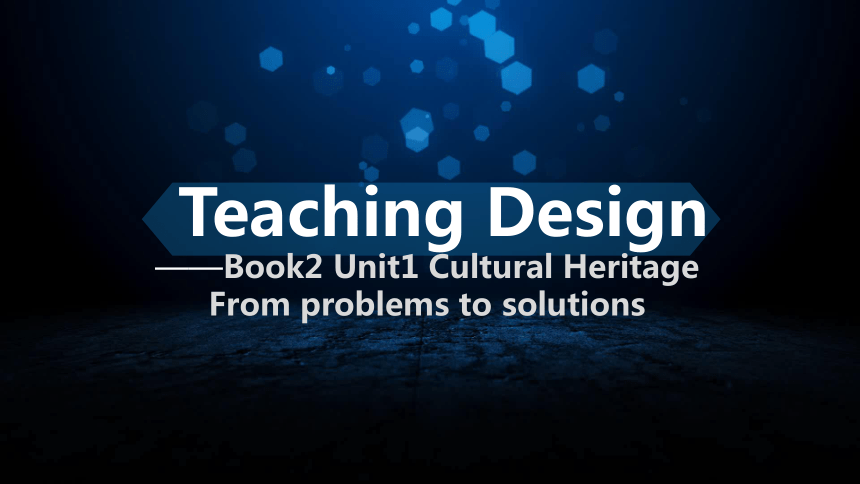 | |
| 格式 | pptx | ||
| 文件大小 | 28.5MB | ||
| 资源类型 | 教案 | ||
| 版本资源 | 人教版(2019) | ||
| 科目 | 英语 | ||
| 更新时间 | 2025-08-23 21:05:53 | ||
图片预览

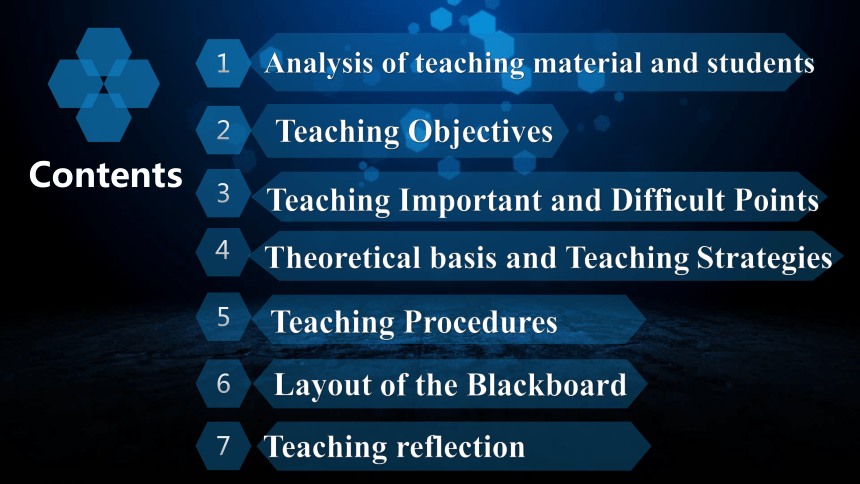
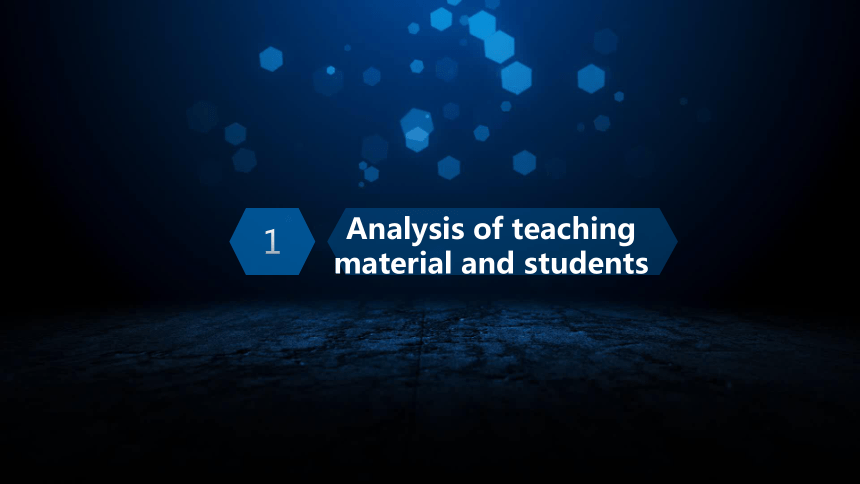
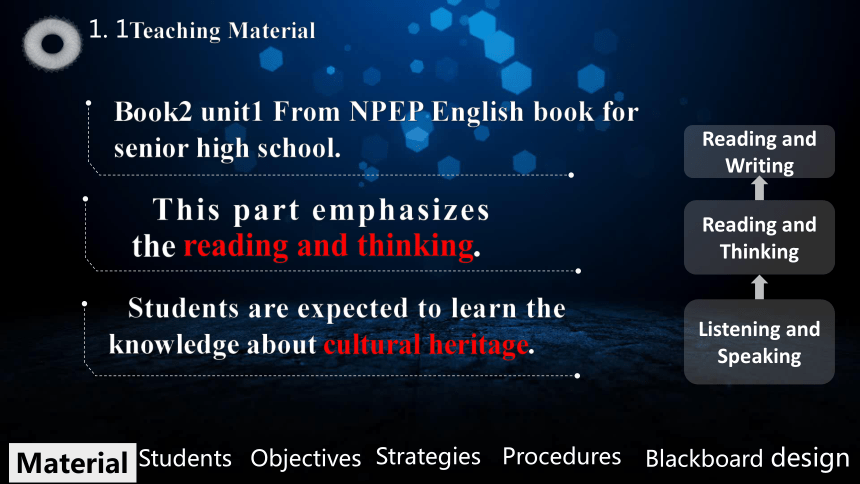
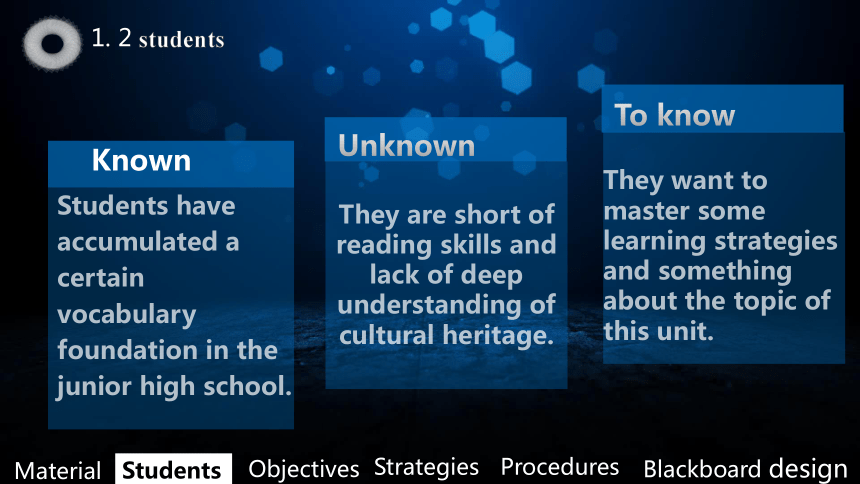
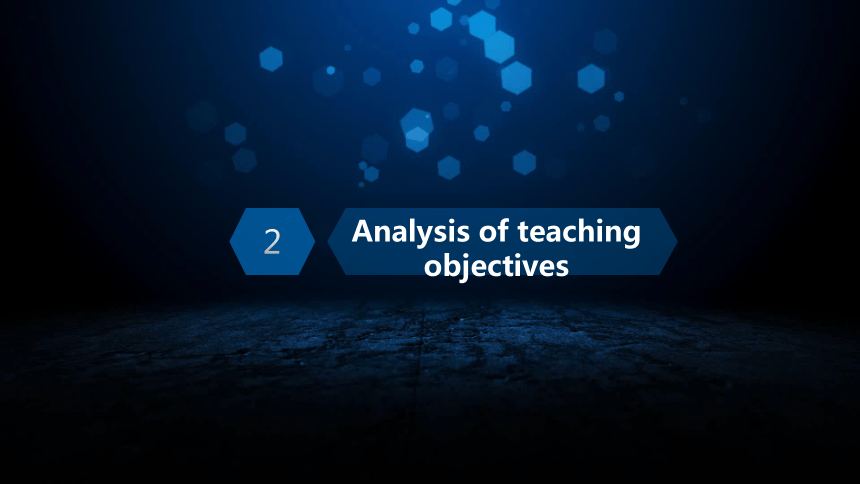
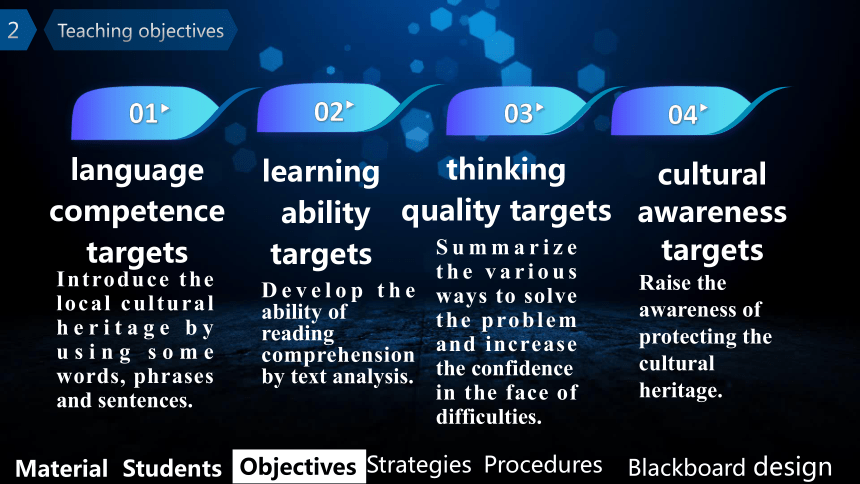

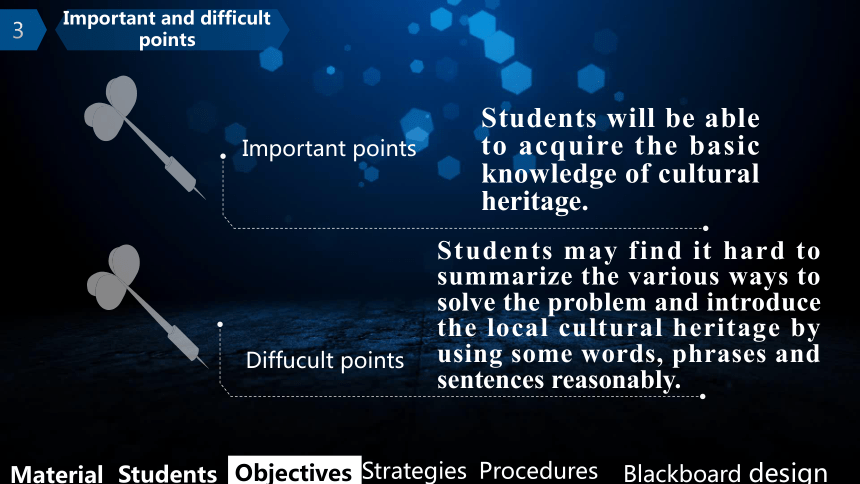
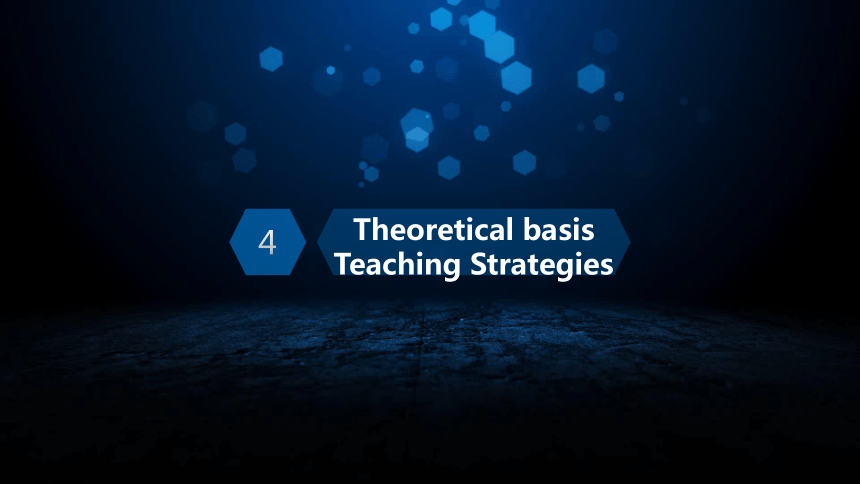
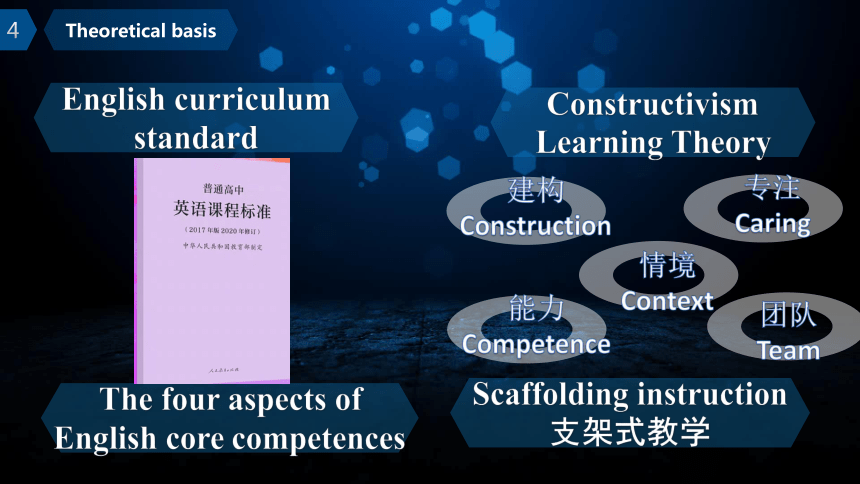

文档简介
(共33张PPT)
Teaching Design
——Book2 Unit1 Cultural Heritage
From problems to solutions
1
Analysis of teaching material and students
2
Teaching Objectives
3
Teaching Important and Difficult Points
4
Theoretical basis and Teaching Strategies
Contents
5
Teaching Procedures
6
Layout of the Blackboard
7
Teaching reflection
1
Analysis of teaching material and students
Book2 unit1 From NPEP English book for senior high school.
This part emphasizes the reading and thinking.
Reading and Thinking
Reading and Writing
Listening and Speaking
Material
Students
Strategies
Objectives
Procedures
Blackboard design
1. 1Teaching Material
Students are expected to learn the knowledge about cultural heritage.
Known
Students have accumulated a certain vocabulary foundation in the junior high school.
Material
Students
Strategies
Objectives
Procedures
Blackboard design
1. 2 students
They are short of reading skills and lack of deep understanding of cultural heritage.
Unknown
They want to master some learning strategies and something about the topic of this unit.
To know
2
Analysis of teaching objectives
2
Teaching objectives
language
competence
targets
Introduce the local cultural heritage by using some words, phrases and sentences.
learning
ability
targets
Develop the ability of
reading
comprehension by text analysis.
thinking
quality targets
Summarize the various ways to solve the problem and increase the confidence in the face of difficulties.
01
02
cultural
awareness
targets
Raise the awareness of protecting the cultural heritage.
03
04
Material
Students
Strategies
Objectives
Procedures
Blackboard design
3
Important and difficult points
Important points
Students will be able to acquire the basic knowledge of cultural heritage.
Diffucult points
Students may find it hard to summarize the various ways to solve the problem and introduce the local cultural heritage by using some words, phrases and sentences reasonably.
3
Important and difficult points
Material
Students
Strategies
Objectives
Procedures
Blackboard design
4
Theoretical basis Teaching Strategies
4
Theoretical basis
English curriculum standard
Constructivism Learning Theory
情境
Context
建构
Construction
专注
Caring
能力
Competence
团队
Team
Scaffolding instruction
支架式教学
The four aspects of English core competences
4
Teaching Strategies
Teaching objectives
The English “four-in-one”teaching approach
Task-Based
Teaching strategies
Co-operative
strategies
Material
Students
Strategies
Objectives
Procedures
Blackboard design
Activity strategies
5
Teaching Procedures
From problems to solutions
Mind-map
Material
Students
Strategies
Objectives
Procedures
Blackboard design
Lead in
3mins
Read for main idea and structure
5mins
Read for details in part1 (problems)
3mins
Read for details in part2 (solutions)
8mins
Read for thinking
8mins
Watch a video of another example
6mins
Discuss and role play
6mins
From problems to solutions
Mind-map
Introduction
Example:
solutions to
problems
Conclusion
Material
Students
Strategies
Objectives
Procedures
Blackboard design
(利用希沃白板涂层技术)
Show the part of pictures and let the Ss guess what the cultural heritage is.
1
Activity 1
充分唤起学生的兴趣,提取相关信息,激活学生的已有的背景知识,启动思维。
1
Activity 1
提升学生语言表达能力和判断思维能力,增加对世界文化遗产的了解。
培养主动思考、合理预测的能力。
2
Activity 2
1.What is the writing style of this passage
A.Narration. B. Agrumentation. C. Exposition.(说明文)
2.Match the main idea of each part
Part1 (Paragraph ) Introduction;
Part2 (Paragraph ) Example: solutions to problems;
Part3 (Paragraph 6 )
获取与梳理活动
概括与整合活动
C. Exposition.(说明文)
1
2-5
Conclusion
分析文章整体结构,掌握文章“总-分-总”的结构,从而提取关键词。
3
Activity 3
1.Must the old give way to the new
2.What does “challenge” refer to
获取与梳理活动
让学生领悟保护文化遗产的意义。培养学生的文化意识。
4
Activity 4
Task 2
Task 3
Task 1
4
Activity 4
Task1
Complete the timeline
4
Activity 4
Task2
Fill in the blanks
4
Activity 4
Task3
Fill in the blanks
Solutions
Solutions
获取与梳理活动
概括与整合活动
抓住时间轴主线,理清文章脉络。引导学生找到解决问题的关键性动词,关注动词。为课堂输出积累词汇,搭建脚手架。
5
Activity 5
Underline the numbers that you can find in solutions.
Q1: What can you infer from the numbers
Q2: A lot of time, money, people and efforts were spent to protect the temples, do you think it was worthwhile
Q3:Was the project considered a great success Why
Q4:What can we learn from the Aswan Dam project
Q1归纳与总结活动。Q2分析与判断。Q3归纳与总结活动。Q4迁移与创造活动。
关注数字的出现,引导学生归纳总结保护文化遗产过程的艰辛,从不同角度思考问题,提升看问题的全面性。结合实际,学以致用。
6
Activity 6
Task1
Watch the video and take notes
Task3
Write down the notes on the blackboard
Task2
Share your notes about the problems and solutions.。
Watch a video about East Gate Tower and think about how the Liuzhou government made a good example.
获取与分析活动
视频呈现柳州市本地保护文化遗产东门城楼所做的努力作为案例
7
Activity 7
Friends from our sister city, Cincinnati, America will visit Liuzhou to know the protection of cultural heritage in our city.
Task1 : Group work
Discuss
Task 2 : Performance
迁移与创造活动
通过课文学习后结合视频资料获取的信息开展小组讨论,培养合作探究学习能力。
8
Self-assessment
After this lesson, I am able to A A+ A++
acquire the basic usage of some words, phrases and sentences.
develop a sense of cooperative learning and the ability of reading comprehension by text structure analysis.
summarize the various ways to solve the problem and increase the confidence in the face of difficulties.
raise the awareness of protecting the cultural heritage.
及时回顾检测教师教学效果及学生学习效果,养成课堂反思的习惯
9
Homework
Compulsory homework:
Write a short passage about 100 words according to your group work in activity 6.
Optional homework:
Search for more information in protecting its cultural heritage while developing its economy. Use the language and writing techniques that were learnt in the passage.
迁移与创造活动
作业设计分层,尊重学生差异性。能力提升体现课堂延续性,拓展对文化遗产相关知识学习的深度和广度
6
Blackboard design
From problems to solutions Problems(questions) Solutions Conclusion
What is the big challenge What did the government do What did the UN do to help the government turn to ask for investigate Not only...but also...
If a problem seems too difficult....
Work together and we can do wonders.
7
Teaching reflection
7
Teaching reflection
Shortages
More time should be given to students
to internalize what they’ve read and learned..
T
H
A
N
K
S
Teaching Design
——Book2 Unit1 Cultural Heritage
From problems to solutions
1
Analysis of teaching material and students
2
Teaching Objectives
3
Teaching Important and Difficult Points
4
Theoretical basis and Teaching Strategies
Contents
5
Teaching Procedures
6
Layout of the Blackboard
7
Teaching reflection
1
Analysis of teaching material and students
Book2 unit1 From NPEP English book for senior high school.
This part emphasizes the reading and thinking.
Reading and Thinking
Reading and Writing
Listening and Speaking
Material
Students
Strategies
Objectives
Procedures
Blackboard design
1. 1Teaching Material
Students are expected to learn the knowledge about cultural heritage.
Known
Students have accumulated a certain vocabulary foundation in the junior high school.
Material
Students
Strategies
Objectives
Procedures
Blackboard design
1. 2 students
They are short of reading skills and lack of deep understanding of cultural heritage.
Unknown
They want to master some learning strategies and something about the topic of this unit.
To know
2
Analysis of teaching objectives
2
Teaching objectives
language
competence
targets
Introduce the local cultural heritage by using some words, phrases and sentences.
learning
ability
targets
Develop the ability of
reading
comprehension by text analysis.
thinking
quality targets
Summarize the various ways to solve the problem and increase the confidence in the face of difficulties.
01
02
cultural
awareness
targets
Raise the awareness of protecting the cultural heritage.
03
04
Material
Students
Strategies
Objectives
Procedures
Blackboard design
3
Important and difficult points
Important points
Students will be able to acquire the basic knowledge of cultural heritage.
Diffucult points
Students may find it hard to summarize the various ways to solve the problem and introduce the local cultural heritage by using some words, phrases and sentences reasonably.
3
Important and difficult points
Material
Students
Strategies
Objectives
Procedures
Blackboard design
4
Theoretical basis Teaching Strategies
4
Theoretical basis
English curriculum standard
Constructivism Learning Theory
情境
Context
建构
Construction
专注
Caring
能力
Competence
团队
Team
Scaffolding instruction
支架式教学
The four aspects of English core competences
4
Teaching Strategies
Teaching objectives
The English “four-in-one”teaching approach
Task-Based
Teaching strategies
Co-operative
strategies
Material
Students
Strategies
Objectives
Procedures
Blackboard design
Activity strategies
5
Teaching Procedures
From problems to solutions
Mind-map
Material
Students
Strategies
Objectives
Procedures
Blackboard design
Lead in
3mins
Read for main idea and structure
5mins
Read for details in part1 (problems)
3mins
Read for details in part2 (solutions)
8mins
Read for thinking
8mins
Watch a video of another example
6mins
Discuss and role play
6mins
From problems to solutions
Mind-map
Introduction
Example:
solutions to
problems
Conclusion
Material
Students
Strategies
Objectives
Procedures
Blackboard design
(利用希沃白板涂层技术)
Show the part of pictures and let the Ss guess what the cultural heritage is.
1
Activity 1
充分唤起学生的兴趣,提取相关信息,激活学生的已有的背景知识,启动思维。
1
Activity 1
提升学生语言表达能力和判断思维能力,增加对世界文化遗产的了解。
培养主动思考、合理预测的能力。
2
Activity 2
1.What is the writing style of this passage
A.Narration. B. Agrumentation. C. Exposition.(说明文)
2.Match the main idea of each part
Part1 (Paragraph ) Introduction;
Part2 (Paragraph ) Example: solutions to problems;
Part3 (Paragraph 6 )
获取与梳理活动
概括与整合活动
C. Exposition.(说明文)
1
2-5
Conclusion
分析文章整体结构,掌握文章“总-分-总”的结构,从而提取关键词。
3
Activity 3
1.Must the old give way to the new
2.What does “challenge” refer to
获取与梳理活动
让学生领悟保护文化遗产的意义。培养学生的文化意识。
4
Activity 4
Task 2
Task 3
Task 1
4
Activity 4
Task1
Complete the timeline
4
Activity 4
Task2
Fill in the blanks
4
Activity 4
Task3
Fill in the blanks
Solutions
Solutions
获取与梳理活动
概括与整合活动
抓住时间轴主线,理清文章脉络。引导学生找到解决问题的关键性动词,关注动词。为课堂输出积累词汇,搭建脚手架。
5
Activity 5
Underline the numbers that you can find in solutions.
Q1: What can you infer from the numbers
Q2: A lot of time, money, people and efforts were spent to protect the temples, do you think it was worthwhile
Q3:Was the project considered a great success Why
Q4:What can we learn from the Aswan Dam project
Q1归纳与总结活动。Q2分析与判断。Q3归纳与总结活动。Q4迁移与创造活动。
关注数字的出现,引导学生归纳总结保护文化遗产过程的艰辛,从不同角度思考问题,提升看问题的全面性。结合实际,学以致用。
6
Activity 6
Task1
Watch the video and take notes
Task3
Write down the notes on the blackboard
Task2
Share your notes about the problems and solutions.。
Watch a video about East Gate Tower and think about how the Liuzhou government made a good example.
获取与分析活动
视频呈现柳州市本地保护文化遗产东门城楼所做的努力作为案例
7
Activity 7
Friends from our sister city, Cincinnati, America will visit Liuzhou to know the protection of cultural heritage in our city.
Task1 : Group work
Discuss
Task 2 : Performance
迁移与创造活动
通过课文学习后结合视频资料获取的信息开展小组讨论,培养合作探究学习能力。
8
Self-assessment
After this lesson, I am able to A A+ A++
acquire the basic usage of some words, phrases and sentences.
develop a sense of cooperative learning and the ability of reading comprehension by text structure analysis.
summarize the various ways to solve the problem and increase the confidence in the face of difficulties.
raise the awareness of protecting the cultural heritage.
及时回顾检测教师教学效果及学生学习效果,养成课堂反思的习惯
9
Homework
Compulsory homework:
Write a short passage about 100 words according to your group work in activity 6.
Optional homework:
Search for more information in protecting its cultural heritage while developing its economy. Use the language and writing techniques that were learnt in the passage.
迁移与创造活动
作业设计分层,尊重学生差异性。能力提升体现课堂延续性,拓展对文化遗产相关知识学习的深度和广度
6
Blackboard design
From problems to solutions Problems(questions) Solutions Conclusion
What is the big challenge What did the government do What did the UN do to help the government turn to ask for investigate Not only...but also...
If a problem seems too difficult....
Work together and we can do wonders.
7
Teaching reflection
7
Teaching reflection
Shortages
More time should be given to students
to internalize what they’ve read and learned..
T
H
A
N
K
S
